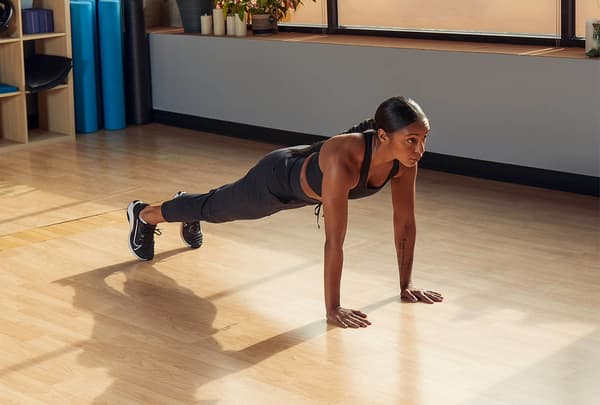4 Expert-Backed Tips for Running in Cold Weather
Sports & Activity
Two physical therapists offer insight into how to bundle up (but not too much!) for winter runs.

The cold shouldn’t stop you from getting outside and going for a run. But it’s critical to be prepared to face the elements — to prevent injury and get the most out of your runs.
If you’re new to running in cold temperatures or haven’t enjoyed it in the past, these expert tips for running in cold weather will help you optimize your workout.
You may not love the cold weather, but when it comes to running, colder weather is better for your performance than warmer weather, said Jessica Chang, D.P.T., O.C.S.
There aren’t specific injuries correlated to running in cold weather. Instead, she said that most injuries manifest because of being underprepared or not properly warming up — regardless of the temperature.
Although you aren’t at greater risk for injury, it’s still important to check weather reports for conditions like snow and ice, Chang advised, as that can increase your risk of slipping and falling, and it will also impact the attire you choose to wear, especially your footwear.
Exercising in the cold can also lead to hypothermia and skin-related injuries such as frostbite. There is also a possibility of wet skin freezing, which is why it’s important to wear sweat-wicking apparel, said Simon M. Brossier, D.P.T., and physical therapist at NYU Langone Orthopedic Center.
1. Dress the Part
Before you get your miles in, make sure you’re wearing cold weather running gear. Your attire will influence how you feel on your run as you don’t want to be cold or too hot. “Smart layering is one of the most important things about cold weather running,” Chang said.
As you begin to run, your body begins to create more energy to sustain this activity, which creates heat throughout your body and, as a result, increases your temperature. In order to regulate your body temperature and prevent overheating, your body produces sweat. You want to maintain a comfortable core temperature without trapping sweat, so you should dress as if the temperature is 10 to 20 degrees Fahrenheit warmer than it actually is, wearing gear made with technical fabric, she said.
Additionally, don’t forget to pay attention to the wind chill temperature index to determine the actual temperature outside versus the temperature that appears on your weather app, Brossier said. This can also help you determine how to dress for your run.
If you’ve ever run in cold weather, you know that covering your hands, ears, and head is a must to prevent your extremities from freezing and going numb. Considering that your head, hands, and feet are areas that tend to lose heat rapidly, don’t forget must-have accessories such as gloves and a neck buff. Everyone will respond to cold weather differently and need different amounts of clothing, so experiment with the amount of clothing you need to feel good.
2. Always Warm Up
Once you’ve got your running outfit down, it’s time to prepare for your run. No matter the weather, warming up is nonnegotiable. It will help prime your body for the activity, increasing your heart rate, building heat in your muscles, and moving your joints through a full range of motion. By the end of your warm-up, you should be experiencing a light sweat if done right, Brossier said.
A bonus of warming up during cold weather months? You will feel warmer, which can make those initial minutes of running feel less miserable as you acclimate to the cold, Chang said.
3. Listen to Your Body
If you’re wondering if you need to adjust your mileage and workout due to the weather, Chang said no, but to instead prioritize listening to your body.
“Your first few cold runs may feel harder than usual because your body is acclimating, so it's important to obey your body if you feel like you need to slow down or stop earlier,” she said.
And when it comes to form, you may notice that your body is hunched and tense. This is what it naturally does in the cold — be intentional about your form and try to stay relaxed and maintain proper running mechanics.
If your initial runs feel too challenging, Chang recommended breaking up long runs into multiple shorter runs because you’ll be in the cold for less time while still hitting the same mileage.
4. Don’t Forget To Cool Down
Post-run, Chang recommended getting back inside as soon as possible, changing out of your running gear into dry clothing, and completing your cooldown in a warm room because your muscles will respond better to stretching when they’re warm. Don’t forget to hydrate and refuel after your run!
(Related: 5 Health Benefits of Infrared Saunas, According to Experts)
To get the most out of a run, you’ve got to set yourself up for success, Chang said. That means making sure that you’re getting rest, doing recovery work, eating nutrient-dense food, and properly hydrating. Additionally, as previously noted, proper attire can make or break your run.
Also, paying attention to your perceived exertion levels and adjusting your runs to how you’re feeling each day — instead of muscling through them — will help you define what “success” looks like on a given day, Chang said.
Words By Tamara Pridgett





